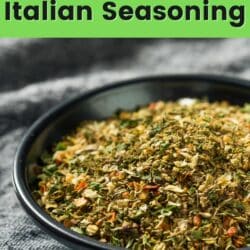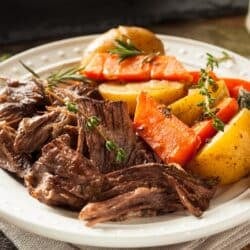5 Easy Substitutes for Italian Herb Seasoning
Italian Herb Seasoning is a popular ingredient in cooking. But what can you use if you don’t have it on hand? This article shares several easy substitutes for Italian herb seasoning for your kitchen including fresh herbs, other types of dried herbs, and more.
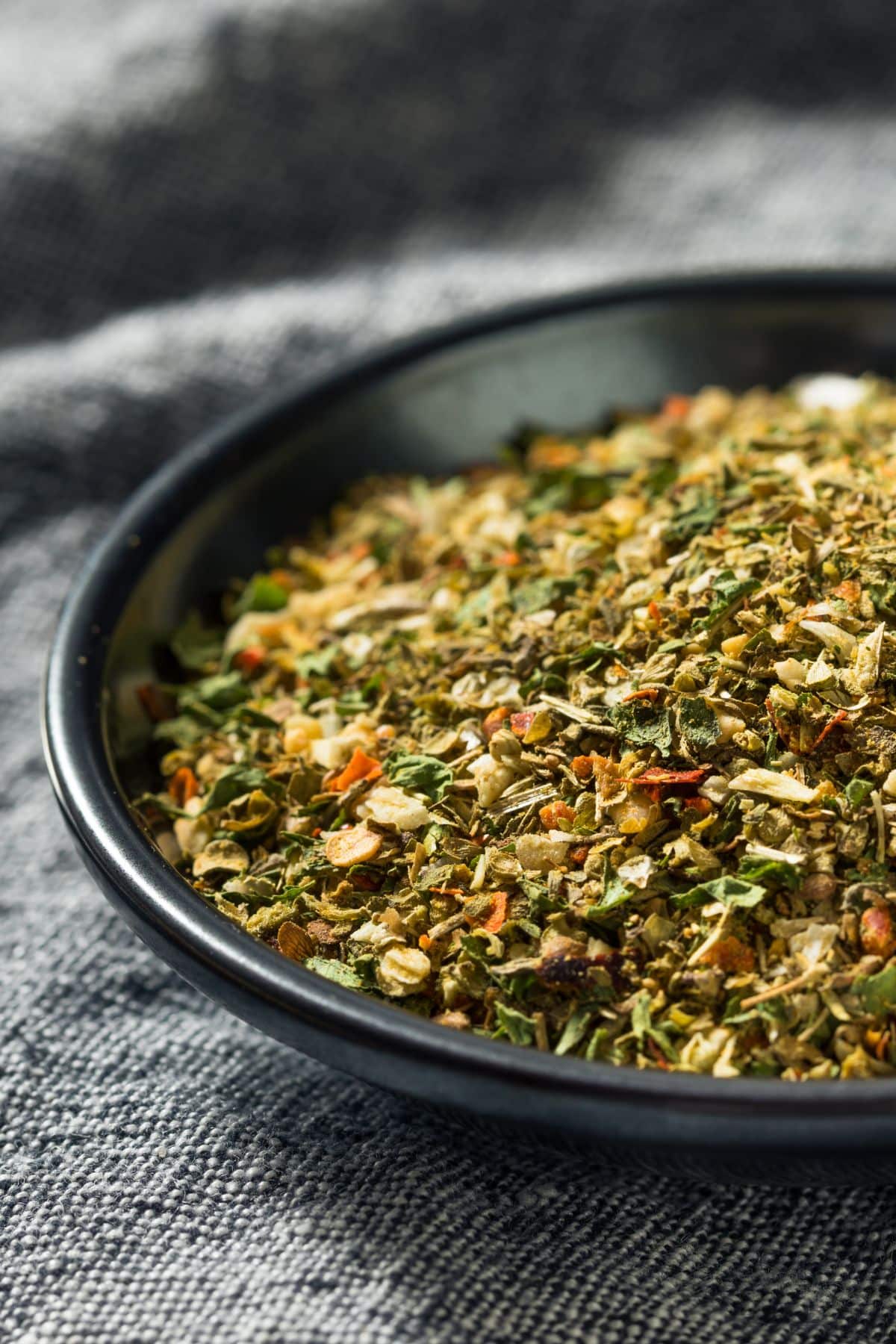
Italian seasoning is a common blend of herbs used in Mediterranean cooking. The typical mix includes oregano, thyme, rosemary, basil, and marjoram.
While the exact proportions vary depending on the manufacturer, these five herbs form the core of most Italian seasoning blends you find at the grocery store.
These herbs are often used together in a particular ratio because they complement each other well and provide a balance of flavor. Italian herb seasoning can be used in a variety of dishes, including Italian cuisine.
Substitutes for Italian Seasoning
Even though Italian seasoning is a great mixture of dried herbs, you can easily substitute it if you don’t have it on hand. Here are some great and easy substitutes!
1. Homemade Italian Seasoning
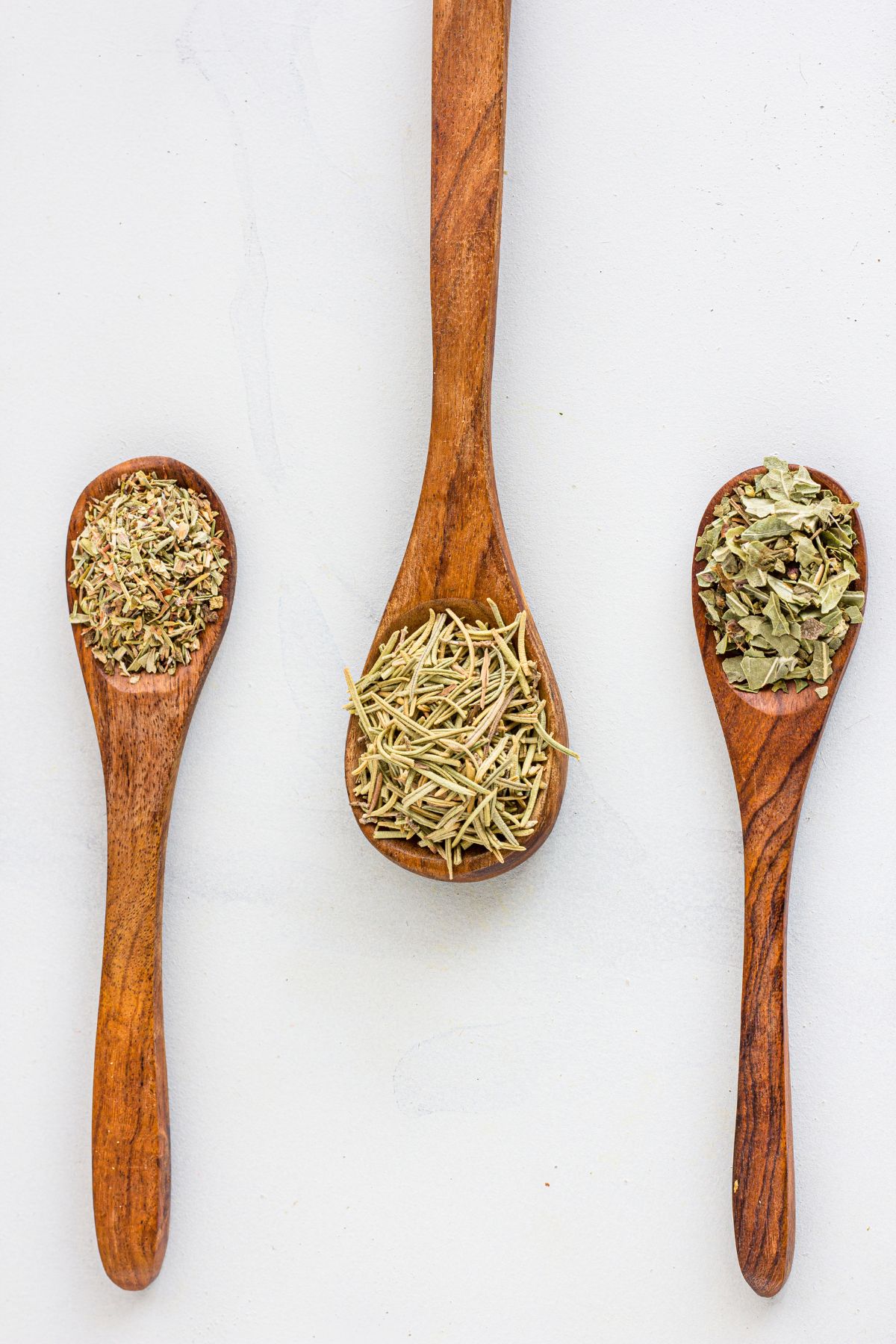
Italian seasoning is a versatile blend of herbs that can be used to flavor a variety of dishes, including salad dressing, pasta sauces, and pizza seasoning.
While you can purchase Italian seasoning mix at the store, it’s also easy to make your own. Here are a few recipes for homemade Italian seasoning blend that you can use as a substitute for the store-bought mix.
To make a herby Italian seasoning blend, combine 1 tablespoon each of dried basil, oregano, rosemary, thyme and marjoram. For a more savory flavor, add 1 teaspoon of garlic powder or 1/2 teaspoon of fennel seeds or sesame seeds. If you want a little heat, add 1/4 teaspoon of crushed red pepper flakes, black pepper, or cayenne pepper.
Store this homemade seasoning blend in an airtight container or spice jar and use it within 6 months.
To substitute one teaspoon of Italian Herbs, use one teaspoon of homemade Italian seasoning using the measurements above.
2. Fresh Herbs
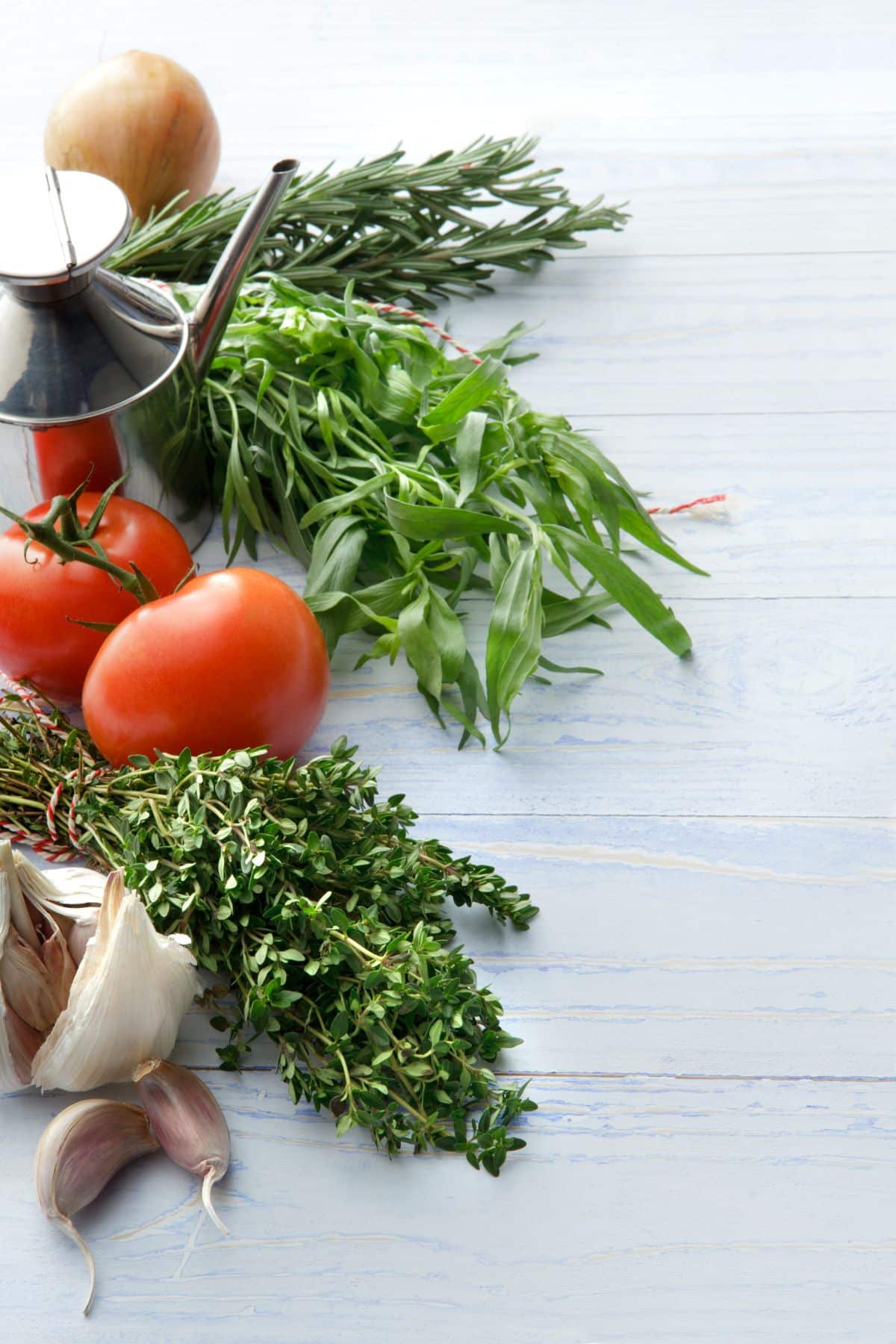
There’s nothing quite like the flavor of freshly picked herbs, and when it comes to Italian herb seasoning, there are a few key ingredients that make it special.
Basil, oregano, rosemary, and thyme are the traditional herbs used in this type of seasoning, but if you’re looking for a substitute, there are plenty of options.
Fresh herbs can be used instead of dried, and many common kitchen spices will also work well.
Garlic powder, onion powder, paprika, and pepper are all good substitutes for the dried herbs typically used in Italian herb seasoning. If you’re looking for something a little more unusual, try using curry powder or cumin. Use a small amount at first and adjust to taste.
To substitute one teaspoon of Italian Herbs, use 1 1/2 teaspoons of a mixture of chopped fresh herbs.
3. Herbes de Provence
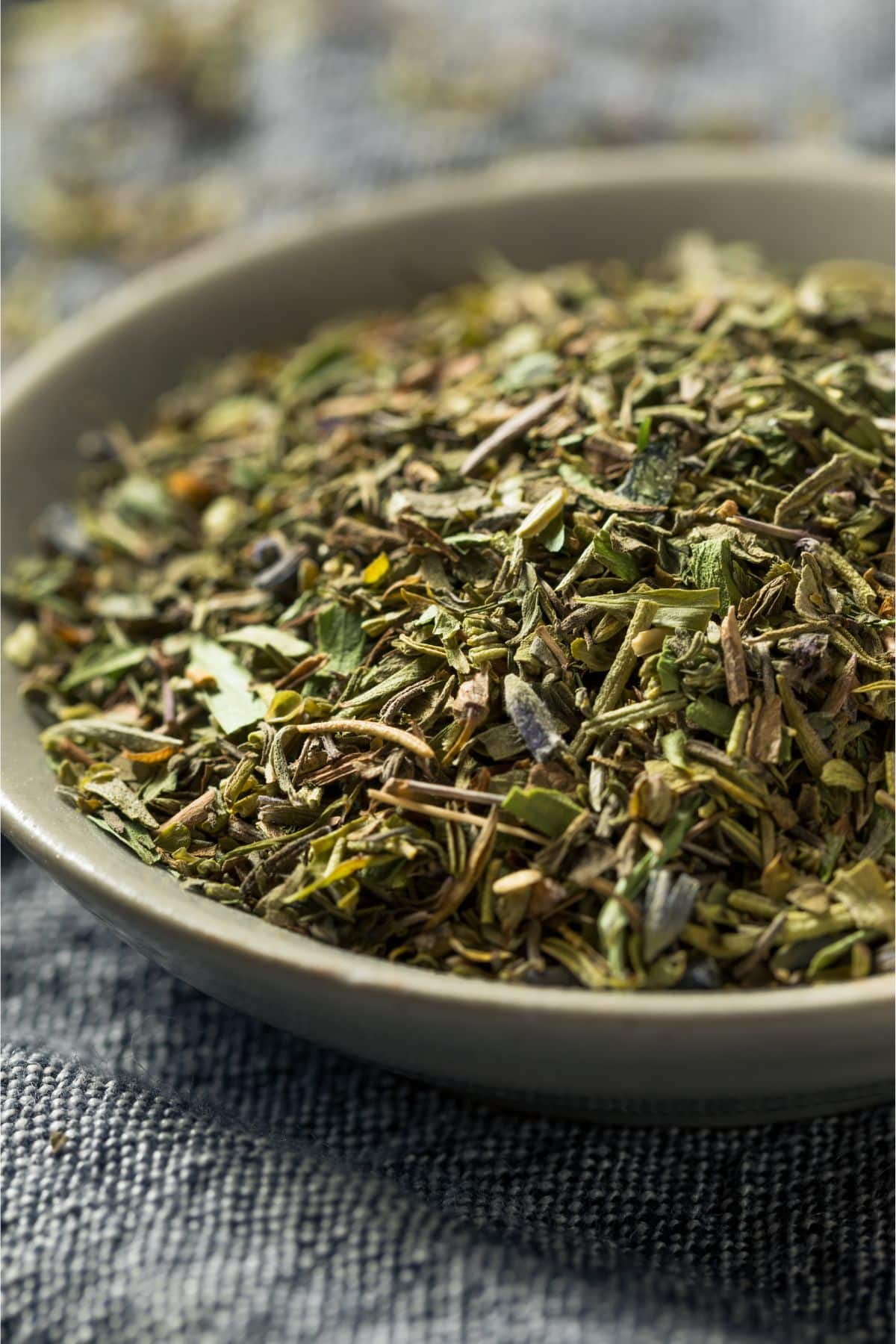
Herbes de Provence usually contains thyme, lavender flowers, and other herbs.
This blend has a slightly different flavor than Italian herb seasoning, but it can still be used in many of the same dishes, though it will give a slightly different flavor to dishes.
To substitute one teaspoon of Italian Herbs, use one teaspoon of Herbes de Provence.
4. Dried basil, oregano, and thyme
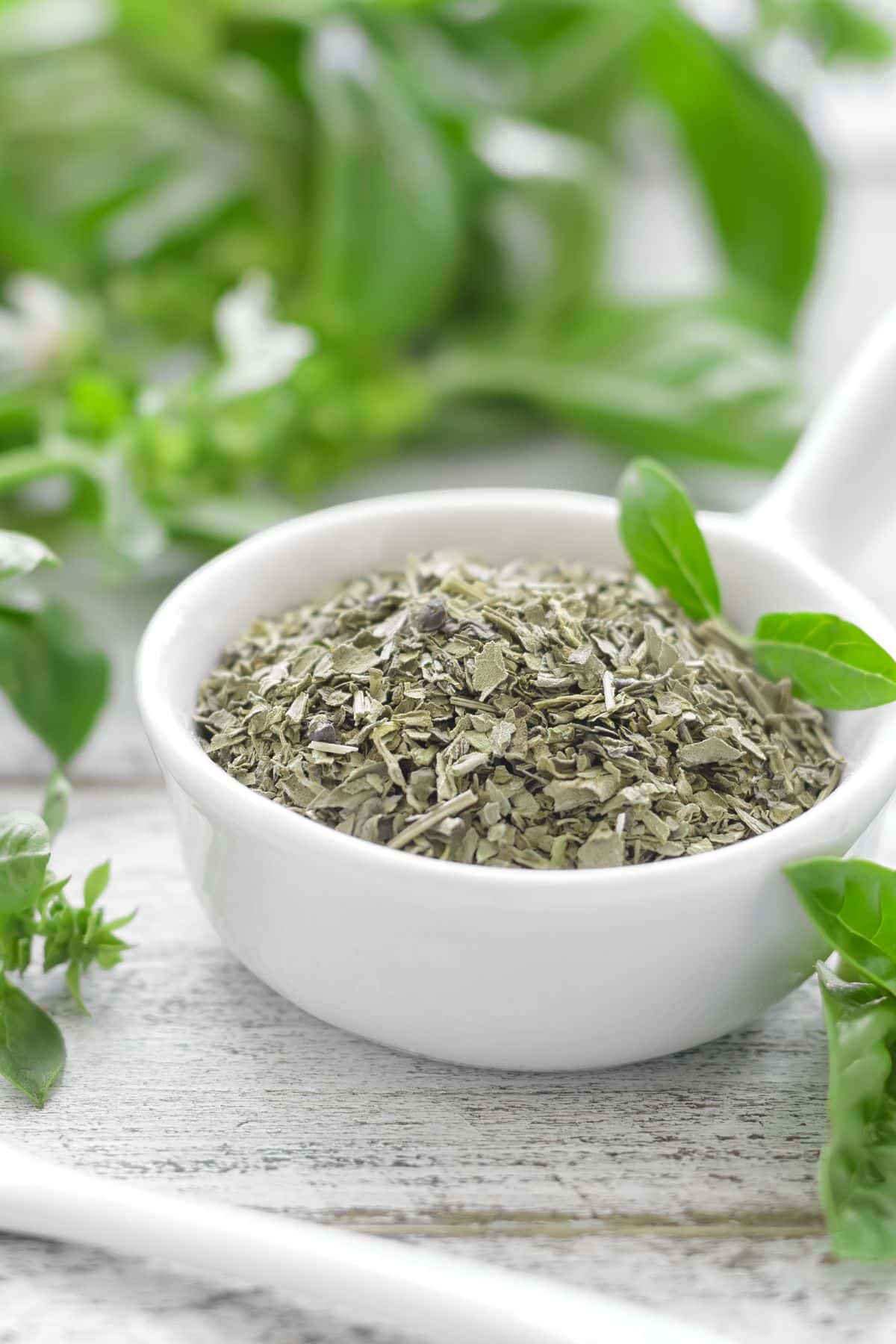
Dried basil, oregano, and thyme are popular Italian herb seasoning and can act as a substitute for a traditional Italian seasoning blend. These herbs are often used to flavor pasta dishes, pizzas, and other Italian cuisines.
However, there are many other dishes that can benefit from the addition of this seasoning. For example, dried basil can be used to make a flavorful pesto sauce. Oregano can be added to roasted vegetables or used as a seasoning for grilled meats. Thyme can be used to make a simple but delicious tomato soup. In addition, all three herbs can be used to make a flavorful vinaigrette or marinade.
So, if you’re looking for a way to add some extra flavor to your cooking, don’t limit yourself to Italian herb seasoning. There are many other ways to use these versatile herbs.
To substitute one teaspoon of Italian Herbs, use 1/2 teaspoon of dried basil, 1/2 teaspoon of oregano, and 1/4 teaspoon of thyme.
5. Dried basil and oregano
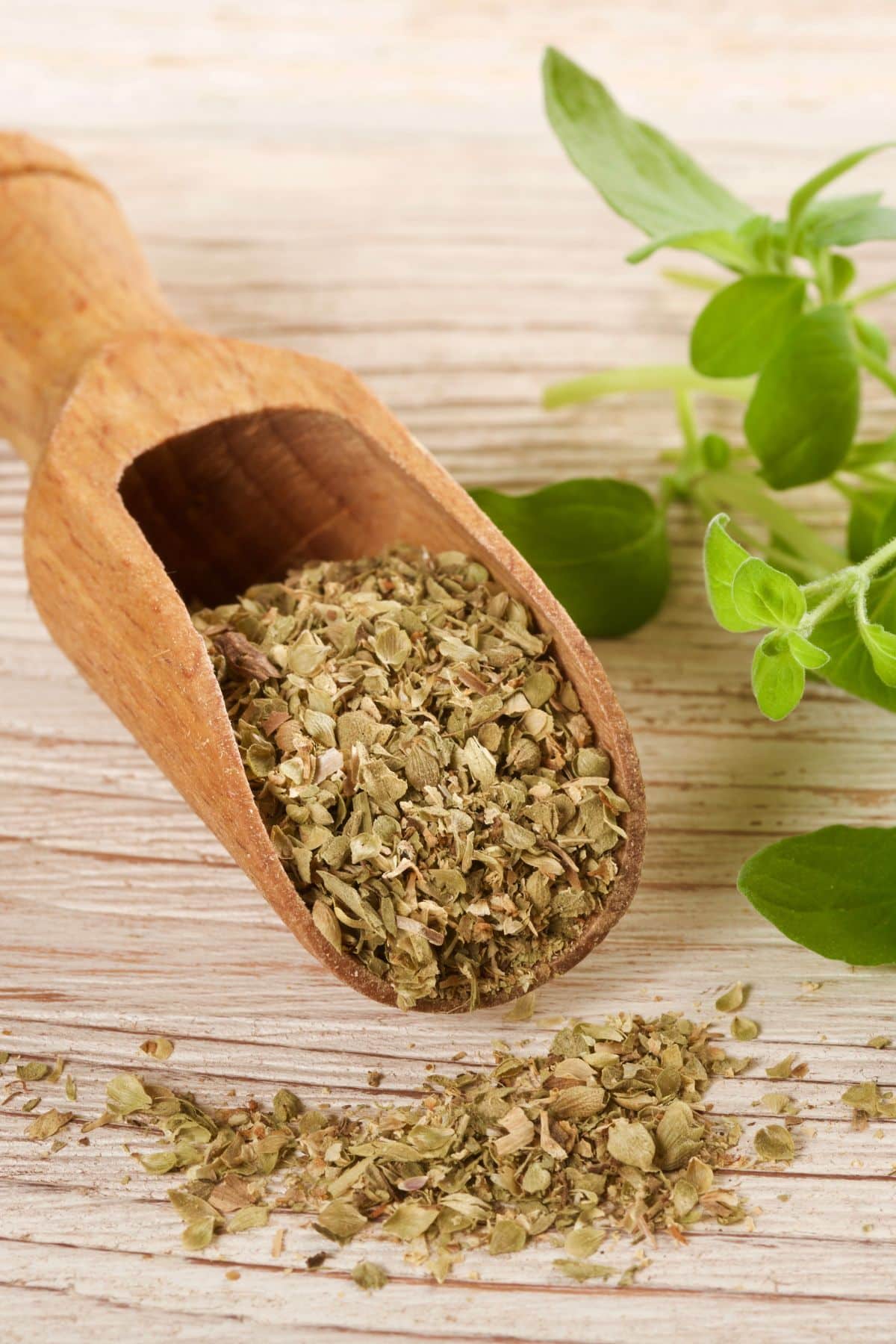
Check your spice cabinet for dried basil and oregano. These are two of the key herbs used in Italian seasoning, so they will give your dish a similar flavor profile.
Dried basil has a sweet, anise-like flavor that is perfect for pesto and other tomato-based sauces. On the other hand, dried oregano has a more earthy flavor that works well with meat-based dishes.
These substitutes will give your dish the same flavor and aroma as the traditional herbs.
To substitute one teaspoon of Italian Herbs, use½ teaspoon of dried basil and ½teaspoon of dried oregano.
Bonus recommendations
If you don’t have any of the above options on hand, you can also try substituting Creole seasoning or Green seasoning for Italian seasoning. Try using one teaspoon of each per one teaspoon of Italian seasoning.
You may not get the full Italian flavors from these substitutes, but you will get great flavor from your dish.

Tips for Using Italian Seasoning (or Substitutes)
There are many ways to use Italian seasoning. One way is to sprinkle it on pizza before baking. It also works well as a rub for grilled meats or added to pasta sauce for extra flavor. This seasoning is often used to add flavor to pasta dishes, pizza, breads and other recipes.
This spice blend seasoning is a great way to add flavor to any dish without overwhelming it. When using this seasoning, simply sprinkle a small amount over your dish for a burst of flavor and adjust to taste.
Italian herb seasoning is an easy way to add flavor to any dish and make it more dynamic, but avoid using too much seasoning, which can make a dish taste salty or bitter.
While some people prefer to make their own Italian seasoning mix, it is also possible to buy it pre-made at the store. Try it the next time you’re in the kitchen!
More Articles About Substituting You Might Like
- Substitutes for Bay Leaves
- Substitutes for Chicken Base
- Substitutes for Chili Pepper
- Substitutes for Dried Basil
- Substitutes for Dill
- Substitutes for Garam Masala
- Substitutes for Olive Oil
Recipes Using Italian Seasoning
Conclusions
In conclusion, there are many different substitutes for Italian herb seasoning. You can use dried herbs, fresh herbs, or even common kitchen spices to add flavor to your dishes. Just be sure to adjust the amount you use to taste. With so many options, there’s no need to limit yourself to just one type of seasoning. Experiment and see what you like best.
Don’t forget to join my newsletter list to get exclusive clean eating recipes and tips. The newsletter is 100% free with no spam; unsubscribe anytime.
About the Author: Carrie Forrest has a master’s degree in public health with a specialty in nutrition and is a certified holistic nutritionist. She is a top wellness and food blogger with over 5 million annual visitors to her site. Carrie has an incredible story of recovery from chronic illness and is passionate about helping other women transform their health. Send her a message through her contact form.


